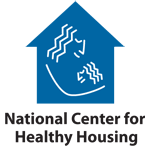Share
Related Topics
Tagged As
A clean home is a healthy home - most of the time - but it’s ironic that some products designed to make our homes cleaner and healthier may contribute to asthma.
We do not strictly control Google ad content. If you believe any Google ad is inappropriate, please email us directly here.
The Healthy Facilities Institute (HFI) therefore recommends limiting or targeting the use of products containing ingredients such as bleach, quaternary ammonium compounds or “quats”, phthalates, and harmful (volatile organic compounds or VOCs), and considering appropriate alternative chemistries or non-chemical options.
“That is not to say that products containing these ingredients are inherently bad; it’s important to recognize that these chemistries do serve a useful purpose,” said Allen Rathey, founder and president of The Health Facilities Institute (HFI). “However, it’s equally important to recognize the need for caution, to target these chemistries to proper applications, and to consider alternative and more benign methods where effective and practical.”
Ingredients such as bleach, quats, phthalates, and many VOCs found in typical cleaning products have all been associated with causing asthma or other respiratory ills.
Studies show residential cleaning services using bleach-containing formulas are at increased risk of asthma. Bronchitis, shortness of breath, coughing and other respiratory problems are linked to regular use of bleach-based and other ‘irritating’ cleaning products.
Phthalate, a common ingredient in product fragrances, ends up in dust that school children inhale, and is often present in higher concentrations in homes of kids with asthma. According to Science News Magazine: “…children exposed to … dust with the greatest concentrations of di(2-ethylhexyl) phthalate (DEHP) were 2.9 times as likely to have asthma as were children exposed to the lowest concentrations of that phthalate.”
Use of quats - compounds in floor cleaners and disinfecting products - may also promote asthma. Volatile ingredients in foodservice or kitchen cleaning formulas, furniture polishes, and other cleaners can irritate mucous membranes and contribute to respiratory disease.
Prudent avoidance of products containing suspect ingredients makes sense, especially when practical alternatives are available. Good ventilation is also vital when products containing potentially asthma-promoting ingredients are used.
“‘Better living through chemistry’ was once a popular phrase, but now, based on what we know, we should perhaps revise that to, ‘Better living through safer, lung-friendly chemistry and intelligent application,’” said Dr. David Mudarri, former senior scientist with the EPA. “Companies that strive to use safer ingredients or that provide non-chemical interventions are a good choice for professionals looking for healthier but effective alternatives.”
Notes and References
• KD Rosenman - Michigan State University, J. Occup. Environ. Med. (May 2003).
• “Asthma symptoms in women employed in domestic cleaning: a community-based study.” Medina-Ramón M, Zock JP, Kogevinas M, et al. Thorax 2003; 58:950–4.
• “When asthma was modeled using multivariate regression, the odds ratios were increased for frequent use of bleach…The authors concluded that the initiation or aggravation of asthma symptoms is associated with the use of bleach and other irritant domestic cleaning products.” Medina-Ramón and colleagues; a case-control study among domestic cleaning women, nested in the 2000–2001 ECRHS cohort in Cornellà, Spain.
• “Excess incidence of asthma among Finnish cleaners in different industries.” Karjalainen A, Martikainen R, Karjalainen J, et al. Eur Respir J 2002;19:90–5.
• “Occupational airways diseases from chronic low-level exposures to irritants.” Balmes JR. Clin Chest Med 2002;23:727–35.
• “Asthma, chronic bronchitis and exposure to irritant agents in occupational domestic cleaning: a nested case-control study.” Medina-Ramón M, Zock JP, Kogevinas M, et al. Occup Environ Med. 2005.
• “The Association between Asthma and Allergic Symptoms in Children and Phthalates in House Dust: A Nested Case–Control Study.” Carl-Gustaf Bornehag; Jan Sundell; Charles J. Weschler; Torben Sigsgaard; Björn Lundgren; Mikael Hasselgren; and Linda Hägerhed-Engman. Environ. Health Perspect. 2004 October; 112(14): 1393–1397.
• “Occupational asthma due to indirect exposure to lauryl dimethyl benzyl ammonium chloride used in a floor cleaner.” PS Burge and MN Richardson; Occupational Lung Disease Unit, Birmingham Heartlands Hospital, UK. Thorax, Vol 49, 842-843, 1994.
• “A combined respiratory and cutaneous hypersensitivity syndrome induced by work exposure to quaternary amines.” Bernstein JA, Stauder T, Bernstein DI, et al. J Allergy Clin Immunol 1994; 94:257–9.
• “Asthma risk, cleaning activities and use of specific cleaning products among Spanish indoor cleaners.” Zock, J-P; Kogevinas, M; Sunyer, J; Almar, E; Muniozguren, N; Payo, F; Sanchez, JL; Anto, JM. Scandinavian Journal of Work, Environment & Health. Vol. 27, no. 1, pp. 76-81. Feb 2001.
HHI Error Correction Policy
HHI is committed to accuracy of content and correcting information that is incomplete or inaccurate. With our broad scope of coverage of healthful indoor environments, and desire to rapidly publish info to benefit the community, mistakes are inevitable. HHI has established an error correction policy to welcome corrections or enhancements to our information. Please help us improve the quality of our content by contacting allen@healthyhouseinstitute.com with corrections or suggestions for improvement. Each contact will receive a respectful reply.
The Healthy House Institute (HHI), a for-profit educational LLC, provides the information on HealthyHouseInstitute.com as a free service to the public. The intent is to disseminate accurate, verified and science-based information on creating healthy home environments.
While an effort is made to ensure the quality of the content and credibility of sources listed on this site, HHI provides no warranty - expressed or implied - and assumes no legal liability for the accuracy, completeness, or usefulness of any information, product or process disclosed on or in conjunction with the site. The views and opinions of the authors or originators expressed herein do not necessarily state or reflect those of HHI: its principals, executives, Board members, advisors or affiliates.
(Note: The views expressed in this blog post are those of the author, and do not necessarily represent those of The Healthy House Institute, LLC.)








